El Nancital and Horses on parade
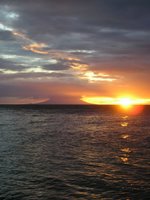
The day after I dropped off Gregg at the airport, the city’s environmental commission began a week long clean –up. There is once-a-week garbage pick up in the community, but during the event, a garbage truck cruised different neighborhoods picking up accumulated trash in homes and yards. A popular way to announce or advertise around these parts is to mount a set of speakers on a vehicle and drive slowly through the streets repeating the message...typically accompanied by lively music. It’s used for everything from selling vegetables, to announcing registration at the college, to inviting people to so-so’s funeral. Though I hate these vehicles, I did get talked into jumping on to one to encourage neighborhood participation at ear-splitting decibels. I have to admit it’s more fun to be on the deliverer’s end than the receiver’s. Here are a few members of the environmental youth group and environmental commission setting things up:

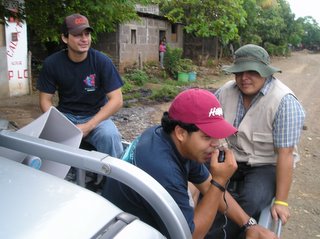
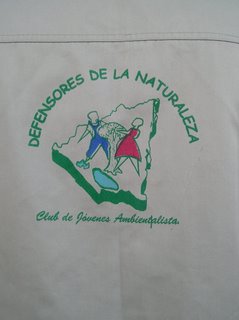
Below are some scenes from the outskirts of the city. In light of what I wrote a few entries ago about trash and people's ability to throw it away, I guess I should clarify a bit by saying usually apathy strikes those in transit. For that reason, the city center is dirtier because people are walking around. For the most part, homes are fairly clean to spotless, with of course some nasty exceptions (think night after frat party with cucarachas) - just like in the rest of the world (except for maybe Germany).


Must've been a big party...

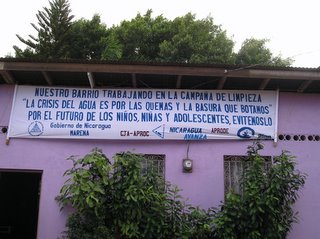
This banner above is posted on the environmental youth group building. It says, ‘Our neighborhood working in the clean-up campaign. The water crisis is due to agricultural and cattle field burning and trash we throw in the streets. For our children’s future, let’s avoid these activities’. The water crisis is soon to come. As of now, water is delivered on a rotational basis – each neighborhood gets water for a few hours or day every 3 or 4 days. But further into the summer (April, May), I’ve heard that period stretches to 8 to 10 days.
The water crisis relates to field burning in that the age-old traditional practice increases soil erosion (among other evils), which in turn reduces the ground’s capacity to absorb water. So, instead of rainwater slowly infiltrating into the soil and being released into rivers over time (say months or years), the water rushes straight to water ways and evacuates the watershed much quicker than it would naturally. Burning fields also can get out of control and burn down neighboring forests, which act to retain water and soil. Since this practice has been passed down from generation to generation, and more and more land is converted from forest into fields, the ecosystem is changing rapidly. I haven’t really figured out the direct link between throwing trash in the street and the water crisis, but in any case it’s bad. That was kind of lecture-like, but I thought it might need some explaining since it wasn’t obvious to me at first. (How can you help without joining the Peace Corps? Buy shade-grown, organic coffee, for one – no pesticides to pollute and shade means trees are growing over the coffee plants).
My association with the environmental youth group also got me invited to participate in a Finish NGO workshop on a cluster of fifteen or so islands in
The tools help community members identify their needs – essentially the different groups (all men, all women, mixed, youth) are asked a bunch of questions related to natural resource availability and how it’s changed over time, types of sicknesses and when they are most common throughout the course of a year, what a typical day schedule is, what kinds of material goods and human resources are available in the town, etc. Some subjects are discussed by multiple groups (for example, both the men and women groups were asked to draw a map of the community) to see how the different groups perceive the subject. Later, a member of the group must present the information to everyone at the meeting. After all this, the NGO can help direct the community’s efforts into reaching some of their goals.
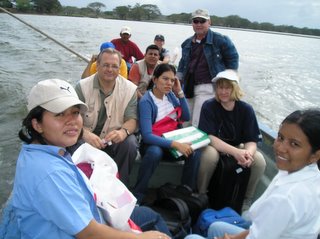 One of the island homes:
One of the island homes: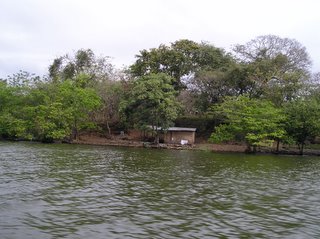 The community:
The community: The women's group drawing a map of the islands:
The women's group drawing a map of the islands: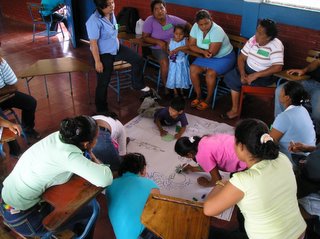 The men's group talking about state of the islands natural resources (fish, water, trees, etc):
The men's group talking about state of the islands natural resources (fish, water, trees, etc):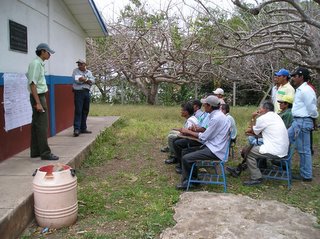 Youth group talking about type of work people do on the islands (the result: fishing, tiny shops (which are really just rooms in someone's house) where people sell odds and ends, and day laborer... nothing else):
Youth group talking about type of work people do on the islands (the result: fishing, tiny shops (which are really just rooms in someone's house) where people sell odds and ends, and day laborer... nothing else):
Result of women's group talking about sicknesses and frequencies of each kind:
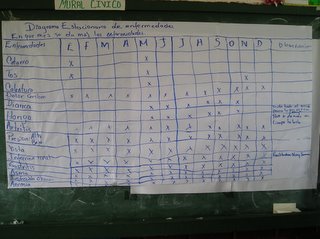 Our "ride" with Volcan Concepcion in the background:
Our "ride" with Volcan Concepcion in the background:
In this case, Nancital’s economy is pretty much only supported by the fisherman, who sell their fish to markets in nearby cities. The problems are that the fish population is declining, and the road the dock that serves Nancital is horrendous. So now less fish is sold, and fewer buyers travel that road to reach Nancital. Another problem is that the government built a health center, but there are no doctors or nurses – and no medicine. And there is a school, but only a pre-school teacher. On the other hand, there’s hope to bring in some money by making it a popular tourist stop…from the islands, one can see four volcanoes emerging from the lake, and with the sunset behind them, the view is breathtaking:
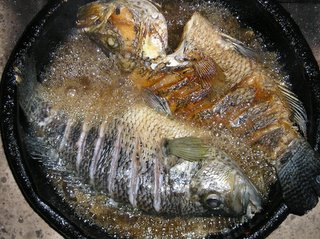
When I got back from Nancital, I attended a big ho-down in a low-income neighborhood of the city, sponsored by the municipal government. It was to celebrate the city’s 128 anniversary and to inaugurate three new garbage trucks donated by
 The girls dancing are from the city’s orphanage.
The girls dancing are from the city’s orphanage. One of the houses donated to the needy:
One of the houses donated to the needy: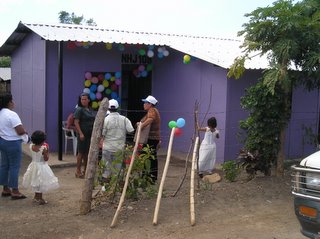
On the weekend, I went to visit Celine, where her community was in full swing celebrating the town’s patron saint. The party lasted a week, and was kicked off by a hipico – or horse-parade, I guess. People come from all over – including lots of rich Nicaraguans who’ve moved to the States – to show off their fine horses. Celine and I concluded it was much like the middle-age man showing off his shiny cherry-red Ferari. The horses are taught to dance, but it’s a far cry from what the famous European Lippizaners can do. The horses are taught in such a cruel way that it looks more like they take frantic steps to avoid getting a crack of the whip, or probably worse. Nearly all the horses' eyes were rolling, and there was lots of bit champing, agitated tail switching, and sweating. So, being an ex-horse owner, it made me kind of sad.
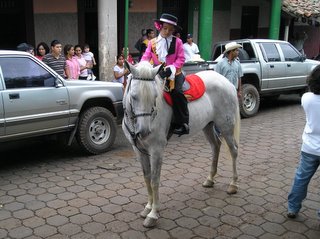
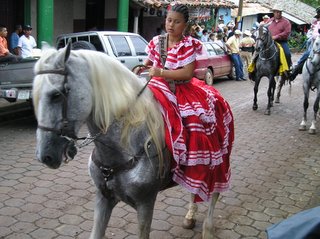 Unfortunately they didn't show up too well in this photo - but this cowgirl wears stilettos.
Unfortunately they didn't show up too well in this photo - but this cowgirl wears stilettos.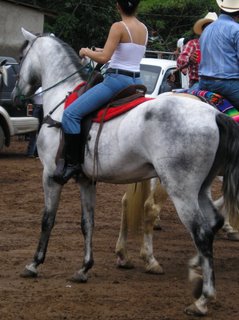 Parting shots:
Parting shots:


1 Comments:
which hipico did you go to in nicaragua?
Post a Comment
<< Home